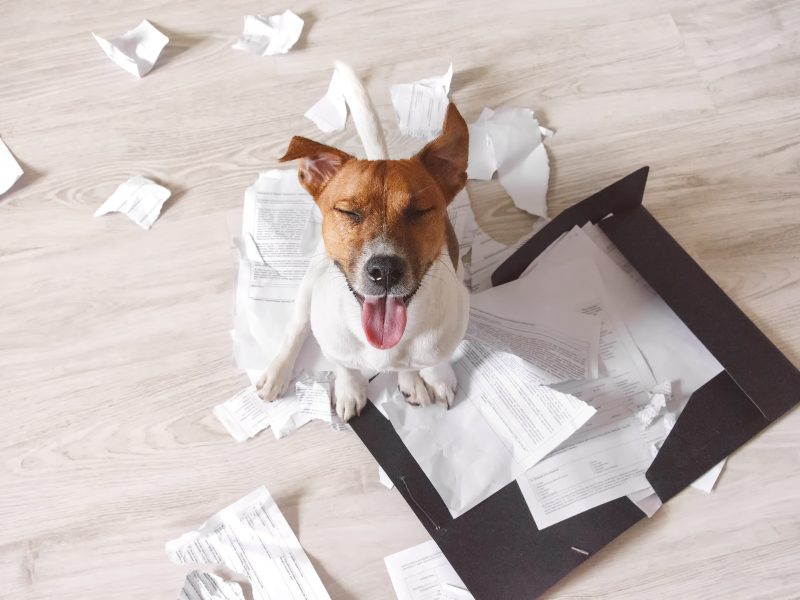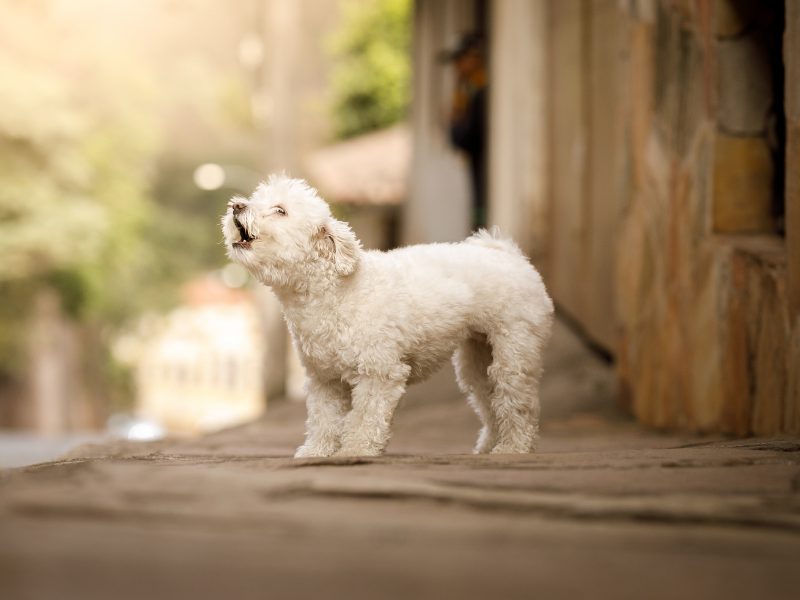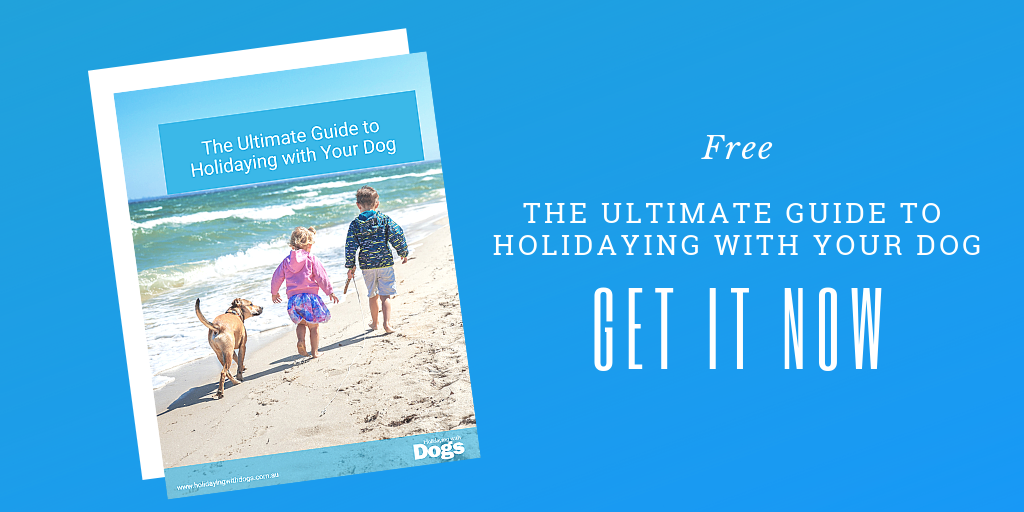While most humans enjoy the Post Covid freedoms, many of our Covid puppies have a real problem! They struggle with the new normal of home alone and ‘intruders’ coming to the house. We need to address their underlying emotions to help our Covid puppies cope with the new normal.
Hopefully, the worst of Covid is over and we can go back to a new normal. This means going back to the office at least a few days a week and having friends over for dinner or a BBQ.

The new normal for our dogs
Unfortunately, most Covid puppies have no idea how to behave when left alone or when visitors come over. Older dogs might have to re-learn this, too. To make the situation even more challenging, these are not ‘obedience behaviours’ that we can teach with a few repetitions and some good treats.
The challenges we are facing require us to help them cope with a situation they find emotionally challenging or scary. To do this we need to use what we call respondent conditioning. Do not worry, I will not bore you with too much psychobabble, but we need to understand some basics to help our dogs. You might recall Pavlov and his salivating dogs? What he did was pair stimuli. He paired a bell ringing with food, and after enough repetitions, the ringing elicited a salivating response. Salivating is not a voluntary behaviour but an involuntary response.
We should do this when our dogs do not cope with being home alone or visitors coming to the houses. We need to pair stimuli and change how they feel about the situation.
Leaving our dogs home alone
Being home alone needs to be associated with something good for Covid puppies. Things like food dispensing toys, hidden treats, tasty chews, comfy beds, etc., and we gradually start leaving them home alone. The process can look like this.
- We first teach them a ‘mat cue’. This means teaching them to enjoy being on their bed. We lure them onto their bed, ask them to lie down and relax, reinforcing the relaxed lying down with a few tasty treats. It is better to put the treats onto the bed rather than feed from our hands. Eventually, we want us out of the picture. This should not be an exercise in ‘down stay’ but a relaxation exercise.
- Once they can spend a few minutes calmly on their bed, we move the bed a little further away, so they learn that they do not need to be on top of us to relax.
- We then start leaving the room, go out the door and come right back. If our dog remains relaxed, we extend the time and distance gradually until we can leave the room and then the house and slowly increasing duration. I do not recommend going ‘cold turkey’, leaving them and hoping for the best. That often makes it worse.
- Long-lasting chews will make this easier.
- Access to the inside and their bed often makes it much easier for dogs to cope.
- It also helps if they are tired. Take them for a morning walk or run, do some training, and use food dispensing toys for their breakfast. Aim for a balance of mental and physical stimulation that works for your dog.
We need to be careful not to label a dog who has trouble being home alone as having separation anxiety. While this might be true, it could also be the case that our dog has just not learnt to enjoy their own company. If we think our dog has actual separation anxiety, then this is not a training issue but a medical problem. Talk to a veterinary behaviourist or a vet to make a diagnosis and recommend the appropriate treatment. Medication can help in these situations.

Good behaviours with visitors
Visitors coming to the house can also be challenging because our Covid puppies have not seen anyone visiting for the last two years. They are certainly very excited to see new people, but they also might be a bit scared. It is also normal for dogs to bark at ‘intruders’; that is why we got dogs historically. But, when living in suburbia, we do not want them to bark excessively but accept our friends coming to visit.
Again, we first will need to change how they perceive visitors. Trying to teach them to be on their mat or a ‘sit stay’ without addressing their emotional state will not work. Stress and high excitement are not conducive to learning.
- Start by avoiding the challenging situation when everyone comes in at once. It helps in the early stages of training to keep our dogs away from the entry door and only let them out when things have settled down.
- If we contain our dog in a different room or their crate, make sure it is a positive experience by giving them a food-dispensing toy, like a Kong, or a chew.
- We can also leave them behind a baby gate, and the visitors throw treats to them. There is no need for petting in the early stages.
- There is also no need for our dog to go very close to our visitors to get treats. Sometimes this can be counterproductive. Our dogs wanting the treat are going too close and then get scared.
- If your dog tends to jump, dropping treats on the floor can help keep four feet on the ground.
- Once your dog is comfortable and happy with strangers, they can get treats from the visitors, and we can then start asking for ‘obedience’ behaviour such as ‘sit for greeting’ or going to their bed.
- We must train ‘sit for greeting’ and ‘go to bed’ before and outside the problematic context, so our dogs know exactly what to do.
- Make sure our visitors interact with our dogs when they are calm and not when they jumping up and barking.

A word on using punishment
A word on using punishment. Some humans resort to citronella or shock collars (illegal in some states) to suppress barking when home alone. Or, yell or hit their dogs when visitors come to the house. You can suppress behaviour with punishment; that is what punishment is designed to do. But, and here is a big but, you have not solved the underlying problem. Punishment has severe side effects such as increased aggression, shut down, break down in the relationship, minimal response to name a few.
If you feel your dog is aggressive, has a bite history, or you are not successfully teaching them to be home alone, talk to a qualified fear free professional. The trainer’s directory of the Pet Professional Guild Australia is a good starting point www.ppgaustralia.net.au.
Teaching new behaviour takes time and patience
Changing how our dogs feel about specific situations takes time, repetitions, patience, and sometimes thinking outside the box. If you have had success using any of these methods, please share by commenting below.
Barbara Hodel, author of “How to Love and Survive Your Teenage Dog”


